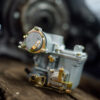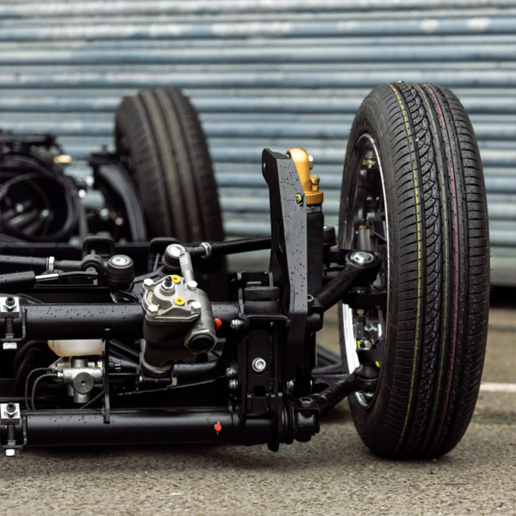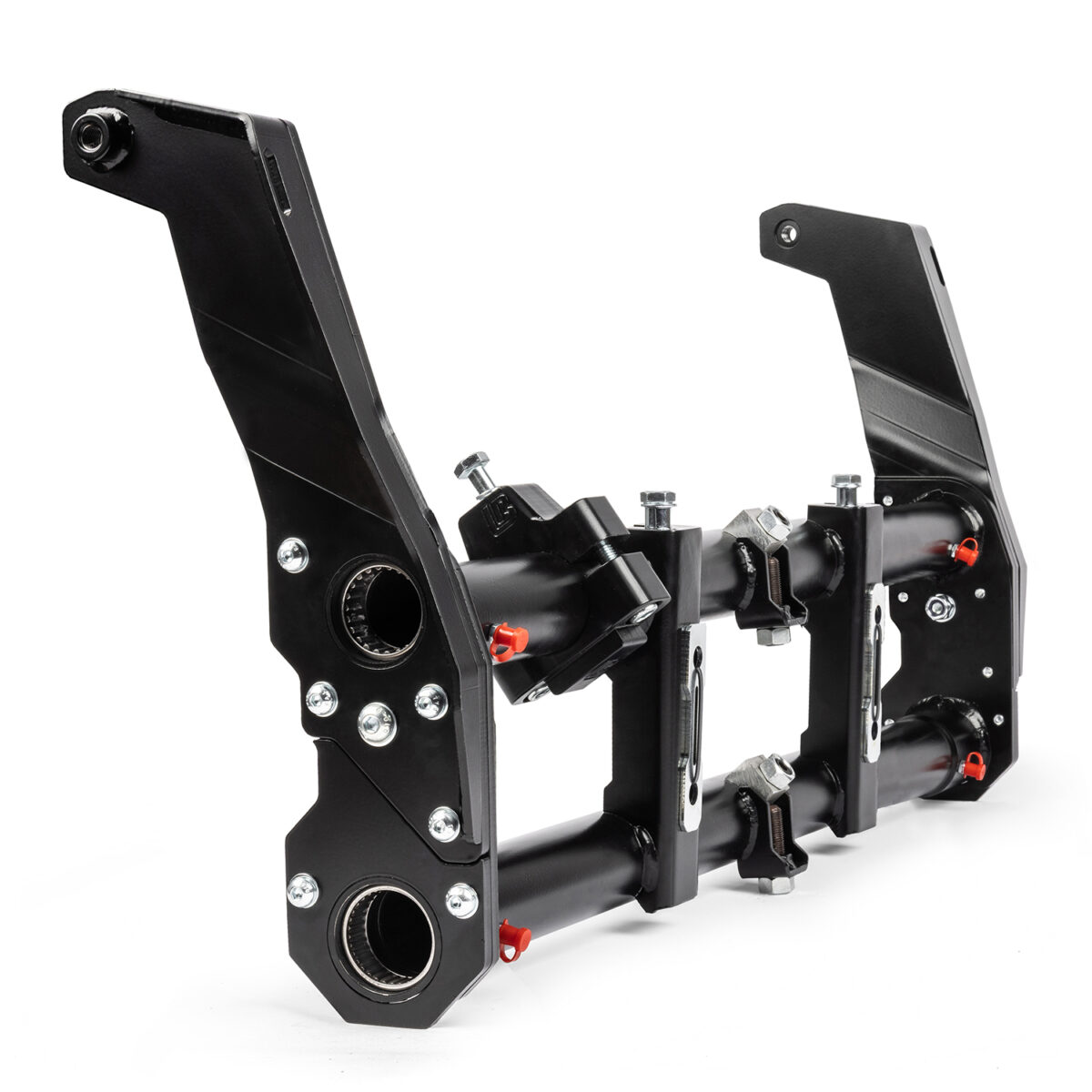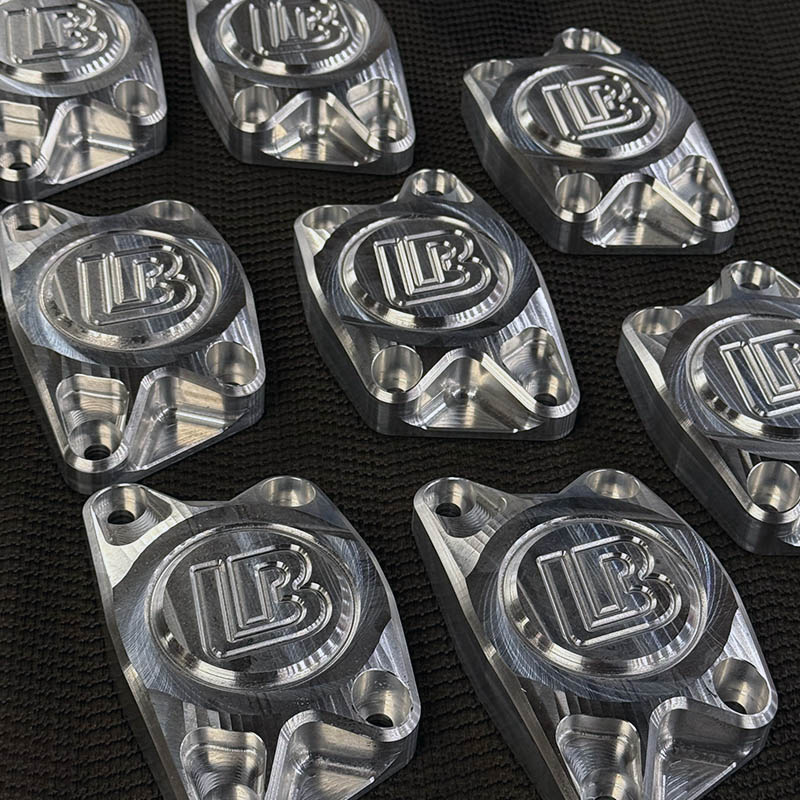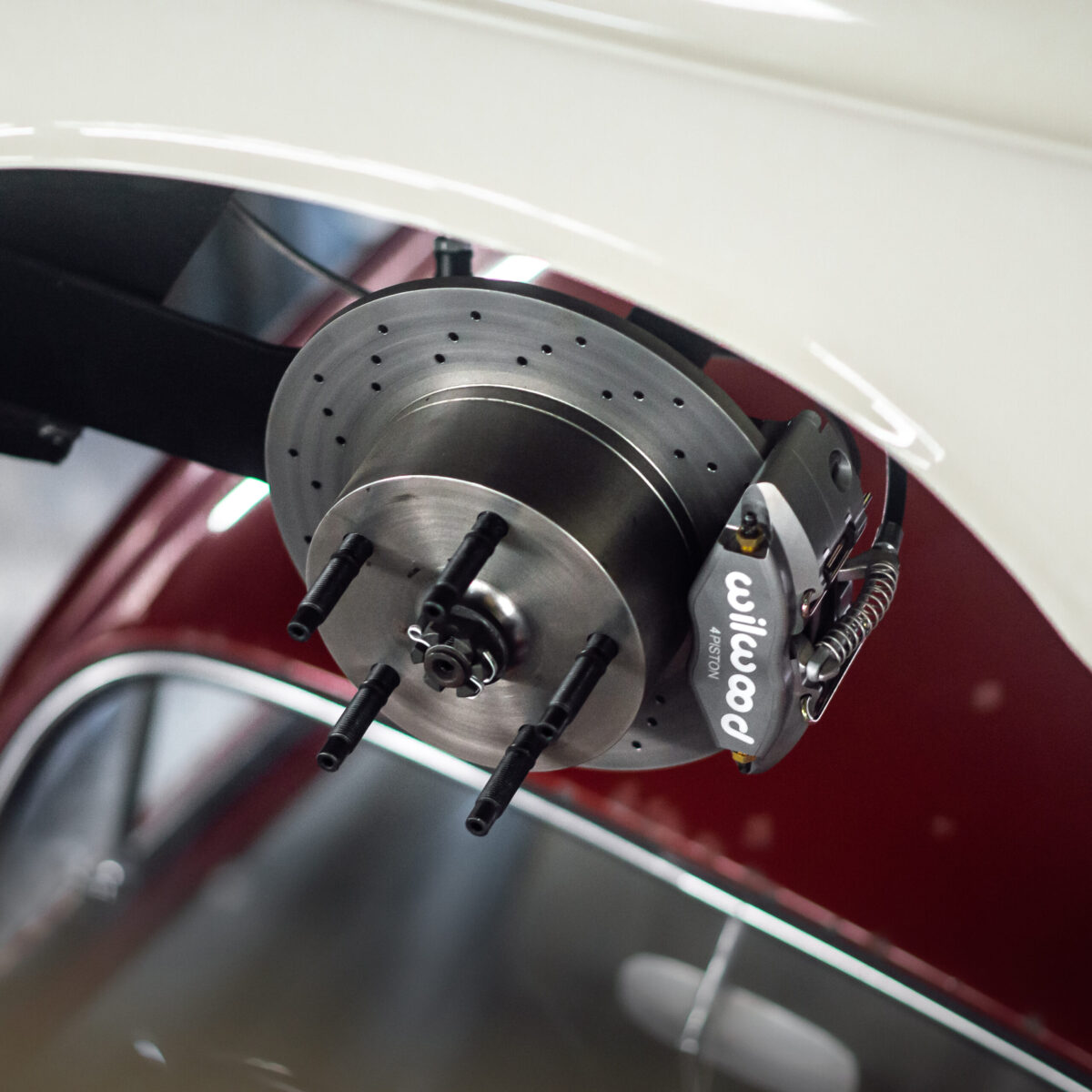Area 1 – Fuel System
- Please make sure that the Fuel Pump is in good working order.
- Install a new inline Fuel Filter to prevent dirt and grit for contaminating the fuel circuits of the carburettor. The tiniest amounts of “grit” can cause blockages in the fuel circuit in the carburetor (new or old) causing poor idle, poor acceleration.
- Clamp the ends and connections of the fuel hose. So that no fuel can come out and cause problems
- New Fuel Hoses are always recommended when installing a new Fuel Filter, Fuel Pump or Carburetor. Hoses should be inspected and/or replaced at least once every 2 years, more often if the engine is experiencing severe service.
Area 2 – Carburetor Installation & Adjustment
- Make sure that the surface of the carburetor mounting flange is smooth and not warped. A warped mounting flange can cause a potential vacuum leak.
- Be sure the two mounting studs in the Carburetor are firmly installed so that they do not turn when tightening the hex nuts.
- Place the Carburetor Base Gasket on the base of the Carburetor through the two studs. Do NOT use any gasket sealer as it may clog any vacuum passages in the Carburetor Base. This gasket is installed “dry”.
- Use two 8mm thread (13mm hex) nuts along with two 8mm ID flexible lock washers (also called “wavy” lock washers).
- Carefully tighten the hex nuts, alternating back and forth between each nut to equally torque the Carburetor base down to the flange to prevent the Carburetor Base and the mounting flange from warping. Torque the hex nuts at 14 foot-pounds (2.0 mkg).
- Connect the Accelerator Cable at the Barrel Nut Assembly in the Throttle Arm. Have a person sit in the driver’s seat and hold the Accelerator Pedal down fully. Move the Throttle Arm on the Carburetor to its fully open position, thread the cable end through the Barrel Nut Assembly, then tighten the bolt of the Assembly. Have your friend release the Accelerator Pedal and the Throttle Arm should return to the fully closed position. If it doesn’t, try it again and re-position the cable end so that it does.
- NOTE: The Throttle Arm on the H30/31PICT or 34PICT Carburetors is NEVER used for Idle Adjustment. This is pre-set at the manufacturer to allow the Throttle Plate to be closed at a certain position for proper idle/air mixture. If this is ever out of adjustment, do the following: a) Remove the Accelerator Cable from the Throttle Arm b) Be sure the Throttle Arm is fully closed c) Be sure the Choke Cam is in the position to where the Choke Flap is fully open c) Take a small flat blade screwdriver and turn clockwise the Throttle Arm Stop Screw until it touches the Choke Cam, then turn the screw another ½ turn. The Throttle Plate Adjustment is now properly set.
- Connect the Fuel Hose from the Fuel Pump to the Carburetor. Remember to use a hose clamp at each fitting!
- Connect the Vacuum hose (3.5mm ID) from the LEFT side of the Carburetor to the Vacuum Advance Can. On Dual Diaphragm Advance/Retard Cans used on 71-74 models, this would be the roundish “coned” side of the can.
- If you are using a Dual Diaphragm Advance/Retard Can (71-74 models), connect the the hose (4.5mm) from the fitting on the flat side of the can to the fitting on the left-most rear vacuum port on the carburetor.
- If your Beetle/Ghia is equipped with an Auto-Stick Transmission, install the vacuum hose between the Auto-Stick Solenoid and the center rear vacuum port on the carburetor. Otherwise, cap this fitting with a vacuum plug.
- On the top of the Carburetor Base, there is a vacuum fitting at a 45 degree angle. On some models, this is for the Throttle Positioner Diaphragm/Valve and on others this is for the EGR Valve (usually 72-74 models). If you are using either one of these attach the vacuum hose between the Carburetor and specific device previously mentioned. Otherwise, cap this fitting with a vacuum plug.
- Attach the wires from the Choke (Top Right Side of Carburetor) and Idle Cut-Off Valve (Bottom Left of Carburetor) to Terminal 15 on the Ignition Coil (aka the “positive side”).
- Start the vehicle and allow it to fully warm up and the Choke is fully open.
- After the engine is fully warmed up, adjust the idle with a screwdriver at the large Air Bypass Screw on the left side of the Carburetor. Counter-Clockwise increases the idle, Clockwise decreases the idle. Idle speed should be set at approximately 850rpm (+-50rpm), a little higher for Auto-Stick Transmission Models.
- The Volume Control Screw (the smaller one below the Air Bypass Screw) is usually pre-set at the manufacturer. After making sure that the idle is set properly, you can take a small flat blade screwdriver and CAREFULLY turn it Clockwise until the idle just starts to stumble. When this happens, turn the screw Counter-Clockwise the idle returns to smooth operation, then an additional 1/4 turn but no more than that. Read just your idle speed at the Air Bypass Screw appropriately afterwards.
- At this time, it is best to check and adjust your timing to whatever your VW’s distributor specifications are. Again, after this done, read just your idle speed at the Air Bypass Screw appropriately.
Area 3 – Ignition
- Ignition Timing. Proper timing is very important not only have the engine idle properly, but to be sure that the entire engine performance is efficient throughout the entire powerband while driving. Actual timing is determined by what distributor the engine is using, not by the engine. If the timing is advanced too high, detonation and/or “pinging” will occur and damage the combustion area in the cylinder head. If timing is retarded too low, detonation can also occur and poor acceleration response will happen.
- How can you know what distributor you have so that proper timing can be accomplished? Look at the distributor casing and you will see a set of numbers stamped on the side of this casing. In most cases, there will be two lines of numbers. One set of numbers beginning with “0231” followed by 6 digits is the Bosch number. The other set of numbers beginning with 021, 022, 111, 113, 211 or 311 is the Volkswagen number. The Bosch number set is the best guide as to the distributor you have to determine proper timing. Once you have the Bosch number, you can go online at http://www.oldvolkshome.com/ovhignbo.htm and check the list of distributors shown in Bosch number order. The “Application” column will show what the distributor was originally installed on. This is also a web link so that when you click it, you’re automatically taken to that distributor’s parts list and timing specifications. Once you have the specifications, you can properly time your engine.
- What if the Application shown for your distributor isn’t the same as what you’re supposed to have? That doesn’t matter – remember, the engine is timed according to the distributor’s specifications, not the engine’s.
- Of course, it should be noted that before timing takes place, the points and condenser should be in good working order, the points properly gapped at .016″, along with the cap, rotor, spark plugs and spark plug wires are all in good condition. Replace any or all of these or efforts at proper timing will be poor at best.
- Distributor versions and Compatibility – The H30/31PICT and 34PICT series Carburetors are specifically designed to be used with a Vacuum-Assist Advance Distributor, which is originally stock equipment on a Volkswagen. The use of a Mechanical Advance Distributor, such as a “009”, “010”, “019”, or “050” will in almost all cases result in hesitation from a standing stop. The purpose of the Vacuum Assist Distributor is that it will detect by way of the Vacuum Advance Circuit Hose from the Carburetor to the Distributor immediately the momentary acceleration characteristics. Mechanical Advance Distributors, no matter how finely tuned and timed, will ever eliminate fully the “hesitation” problem that people encounter when trying to adjust the timing or the Carburetor Accelerator Pump. The Mechanical Advance just cannot detect the immediate changes of carburetor acceleration that a Vacuum Advance circuit is able to do. This is why many experienced VW mechanics will not recommend a Mechanical Advance only distributor in this installation.
- Once the ignition/timing issues have been resolved, it’s time to install and adjust your carburetor.
Troubleshooting – Stalling At Idle
- There are a few areas to look at when troubleshooting this problem. Vacuum Leaks, Fuel Pump, Carburetor and Fuel Lines.
- Does the engine run fine when cold and the Choke is closed? Does the engine begin to stall out as the Choke opens? More often than not, it’s usually a Vacuum Leak. These could be anywhere, but here are the most common areas to inspect and correct: a) Vacuum Hoses running from the Carburetor to the Distributor Vacuum Advance/Retard Can – check to see if the Advance/Retard Diaphragm will hold a vacuum. If not, that needs to be replaced (Note: This would have been detected when checking and adjusting the timing in the Ignition Area above, but it bears mentioning here as well). b) Vacuum Hoses running to Throttle Positioner Device (68-73 Bugs/Ghias, 68-71 Buses), EGR Valve (72-74 Bugs/Ghias) Air Cleaner Diaphragm Flap (Bugs/Ghias 72-74) or Auto-Stick Solenoid (Bugs/Ghias 68-75). c) Throttle Shaft on Carburetor. If this is bad, Carburetor usually has to be replaced. d) Carburetor Base to Manifold Flange – This can warp over a long period of use (Also check for stripped Carburetor Studs/Nuts). e) Cracked or loosely clamped Boots between the Manifold Center Section and Manifold End Castings on Dual Port Engines (71-74 Bugs/Ghias, 1971 Buses). Even the most minute of unseen cracks or loose clamps can cause a vacuum leak – Check and replace if necessary. f) Manifold to Cylinder Head – Gasket Ring (Single Port Engines) or Gasket (Dual Port Engines) may have a leak (Also check for stripped Studs/Nuts).
- To check for leaks in all the places mentioned, use a spray bottle with soapy water and spray these places. If the Engine RPMs change when sprayed at, you’ve located your Vacuum Leak.
- Once it is determined that there are no Vacuum Leaks, check to see if the Idle Cut-Off Solenoid (12 Volt Models) is working properly. There is a wire running from Terminal 15 on the Ignition Coil to this as well as the Choke Element. a) On H30/31PICT and 34PICT Carburetors, the Solenoid is located on the LEFT side of the Carburetor. Disconnect the Terminal at the Solenoid, turn on the Ignition (don’t start the Engine), then momentarily touch the Solenoid Terminal with the wire lead terminal. You should hear a “clicking” sound which indicates the Solenoid is working. If not, replace the Solenoid.
- On H30/31PICT and 34PICT Carburetors, there is one or two Idle Pilot Jets on the RIGHT side of the Carburetor. These should be checked, cleaned and blown out with compressed air. Be sure to blow out the Idle Jet Hole the jet screws into as well.
- Check the Fuel Pump to be sure a steady flow is being provided. This requires temporarily installing a fuel pressure gauge between the Pump and the Carburetor to be sure of the pressure rating between 3 and 5psi. Minimum delivery capacity is 400cc per minute at approximately 3800rpm engine speed.
- Check that the Fuel Hoses and Metal Lines from the Fuel Tank are not clogged.
- Check that the Fuel Screen in the Fuel Tank at the Fuel Tap is not clogged. Replace it if necessary. In addition, be sure your Fuel Tank is clean and not full of rust flakes, which would clog the Fuel Screen.
Troubleshooting – Hesitation
- There are generally two areas to look at when troubleshooting this problem. The first is the Carburetor, the second is the Ignition System.
- Here are the possible Carburetor specific causes for hesitation: a) Accelerator Pump passages or Check Ball is sticking from dirt b) Torn Accelerator Pump Diaphragm c) Idle Adjustment is incorrect (usually too low) d) Amount of fuel injected is incorrect (this is corrected by readjusting the Accelerator Pump, which should not be needed as a new Carburetor is bench flowed at the manufacturer to set this properly).
- In relation to the “amount of fuel injected”, there is a critical area that is often overlooked and that is the brass Fuel Dump Tube in the carburetor throat near the Choke Flap. The positioning of this brass tube is critical dependent on the carburetor model. If this tube is missing, it will have to be replaced.
- On H30/31PICT models, the Fuel Dump Tube should be positioned so that a shot of fuel expelled from this tube is made straight down the carburetor throat, especially so that it is unimpeded by the Lower Fuel Discharge Tube near the center of the carburetor throat. The Fuel Dump Tube can be carefully moved to accomplish this.
- On 34PICT models, the Fuel Dump Tube should be positioned so that a shot of fuel expelled from this tube DOES hit the Lower Fuel Discharge Tube so that the fuel stream splatters and is partially atomized in the airflow of the carburetor throat. A straight of fuel shot down the carburetor throat like the earlier carburetor models will definitely result in a “hesitation” situation.
- In addition, vacuum leaks as described previously will result in hesitation. Be sure to check all of the problem areas previously mentioned and correct if necessary.
- In the area of Ignition, incorrect timing can be the culprit. Be sure that your distributor is timed correctly.
- Although there are timing specifications to follow on certain distributors, here are some basics to follow: a) Single Vacuum/Mechanical Advance Distributors (SVDA) are usually timed at 7.5 Degrees BEFORE Top Dead Center with the Vacuum Hose disconnected and plugged b) Dual Diaphragm Vacuum/Mechanical Advance Distributors (DVDA) are usually timed at 5 Degrees AFTER Top Dead Center with BOTH Vacuum Hoses connected.

